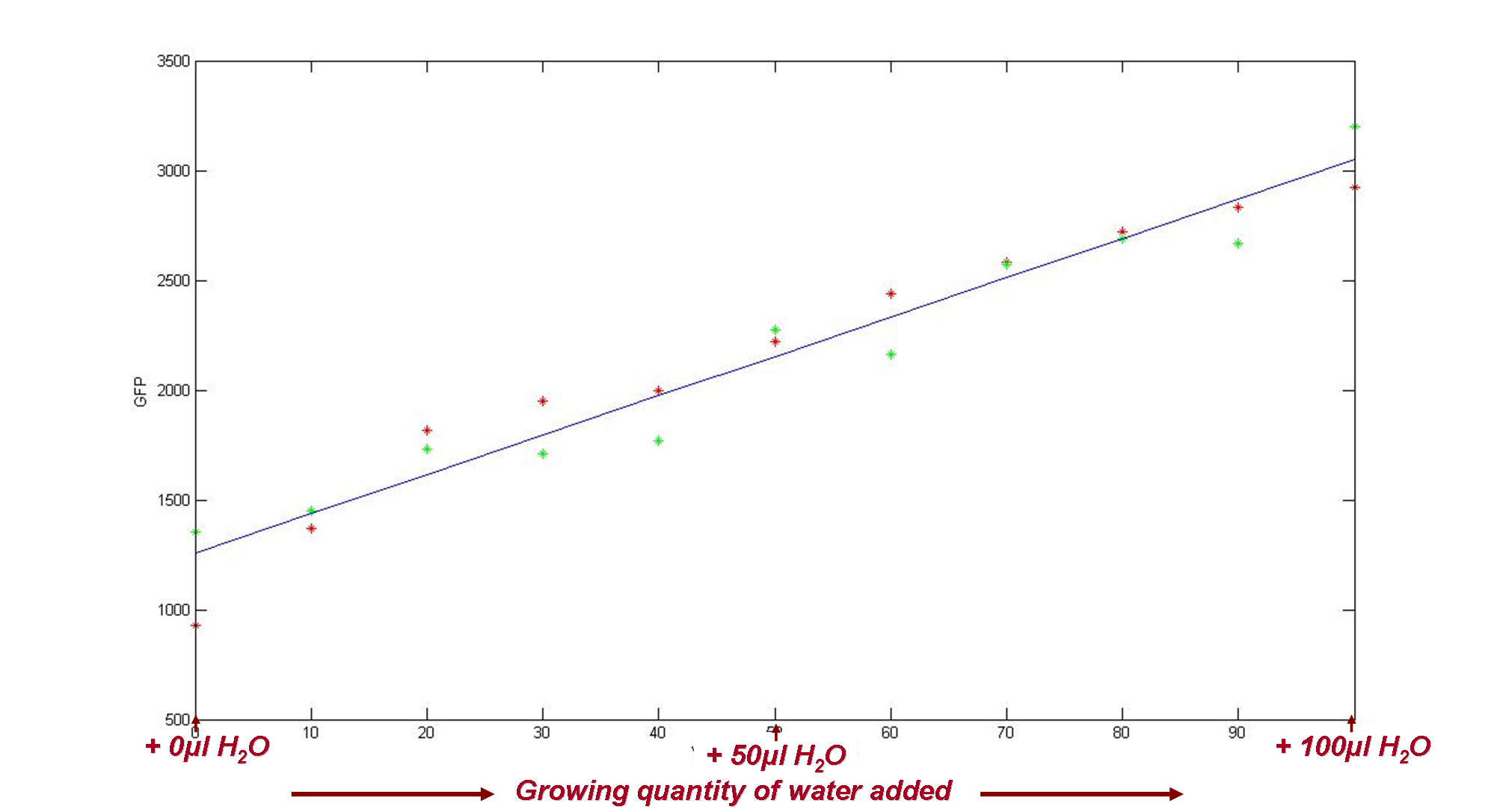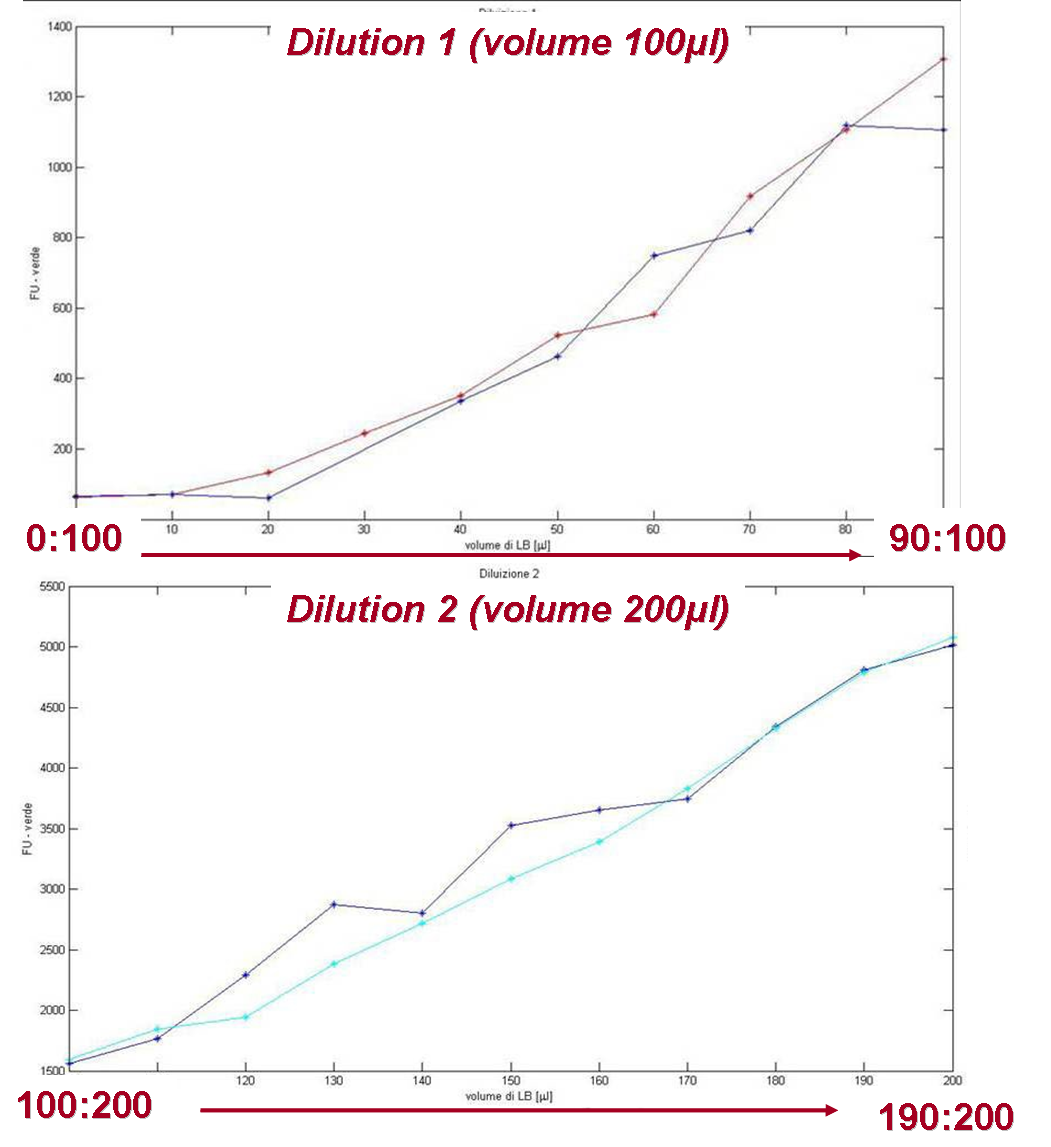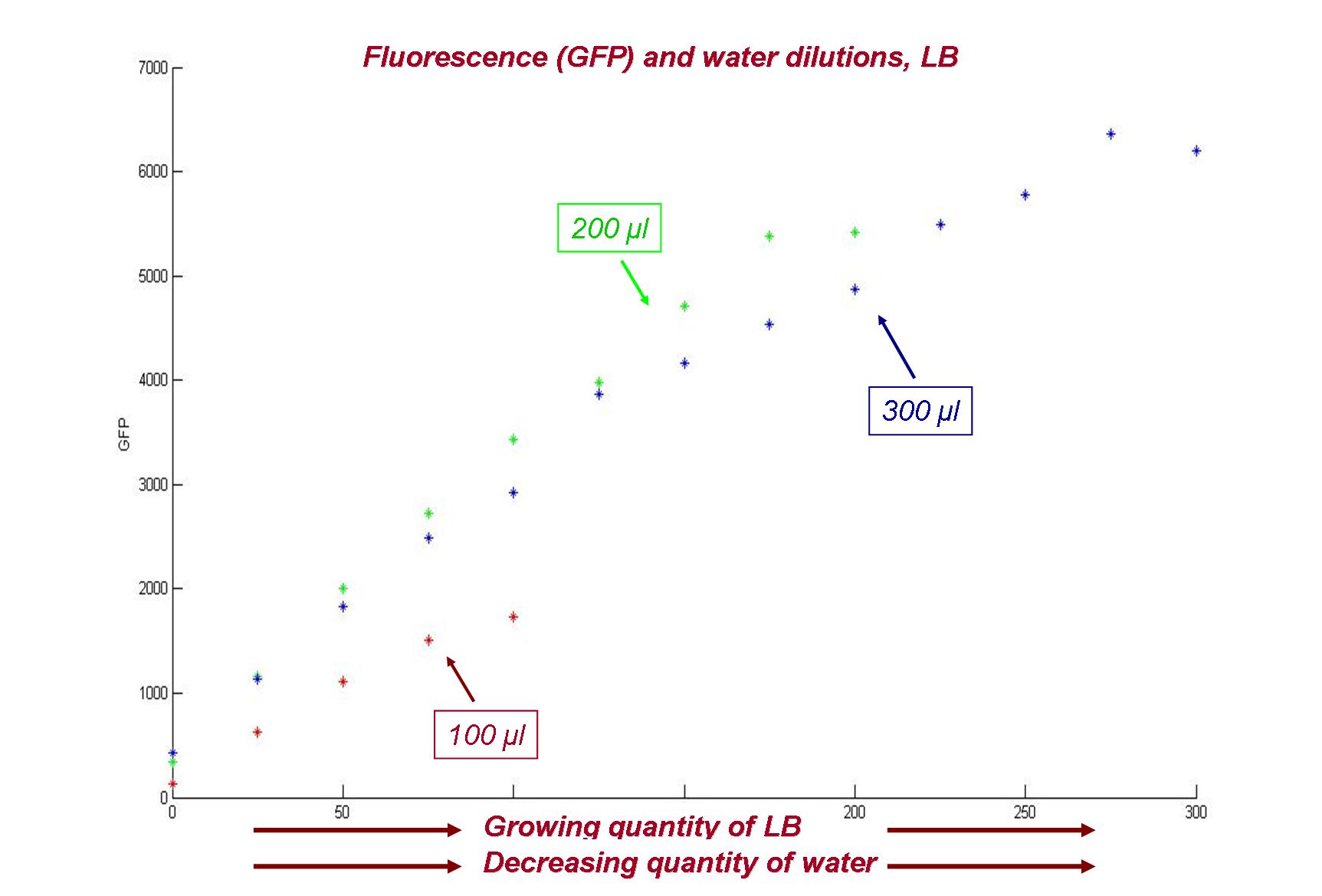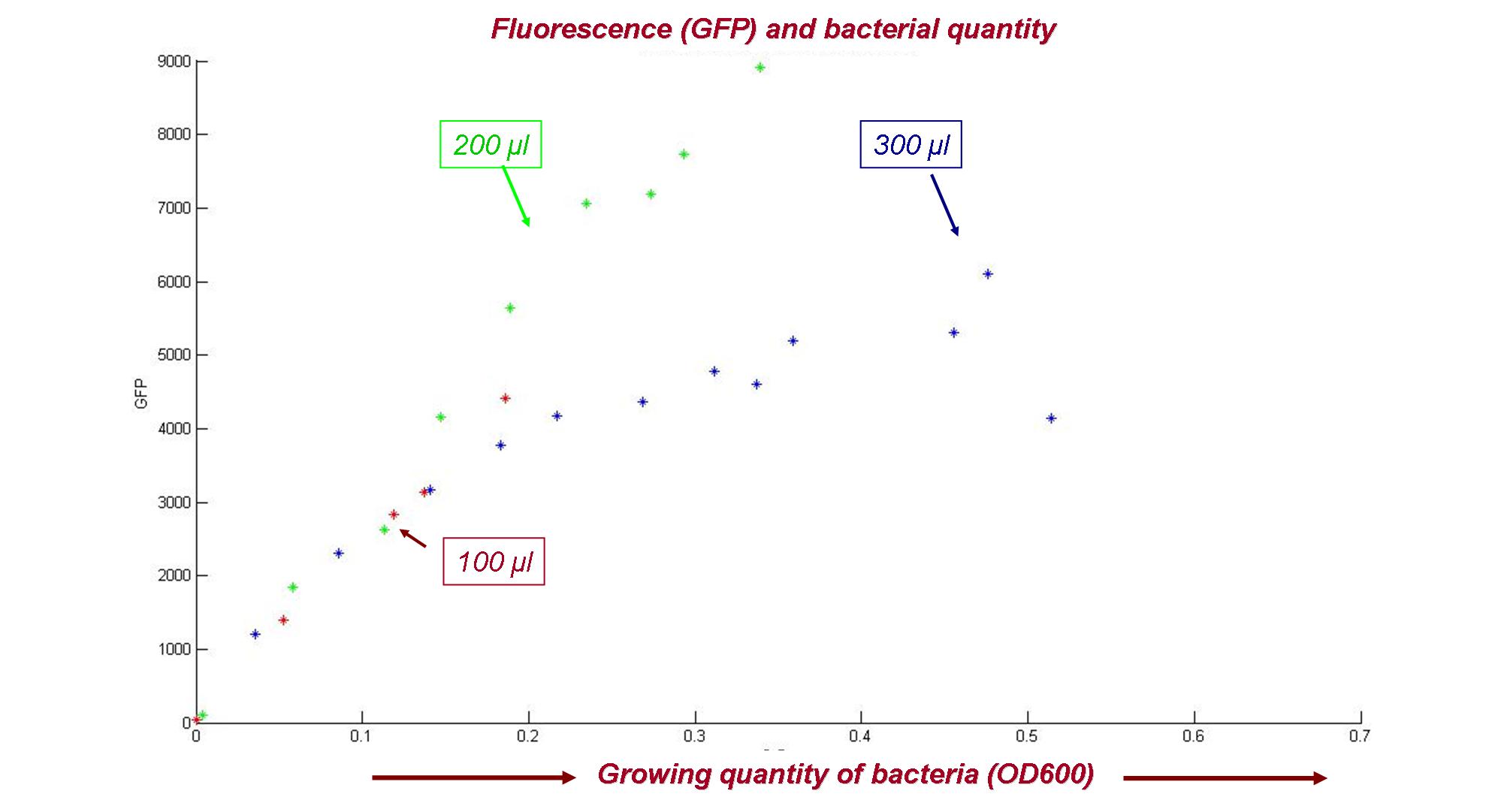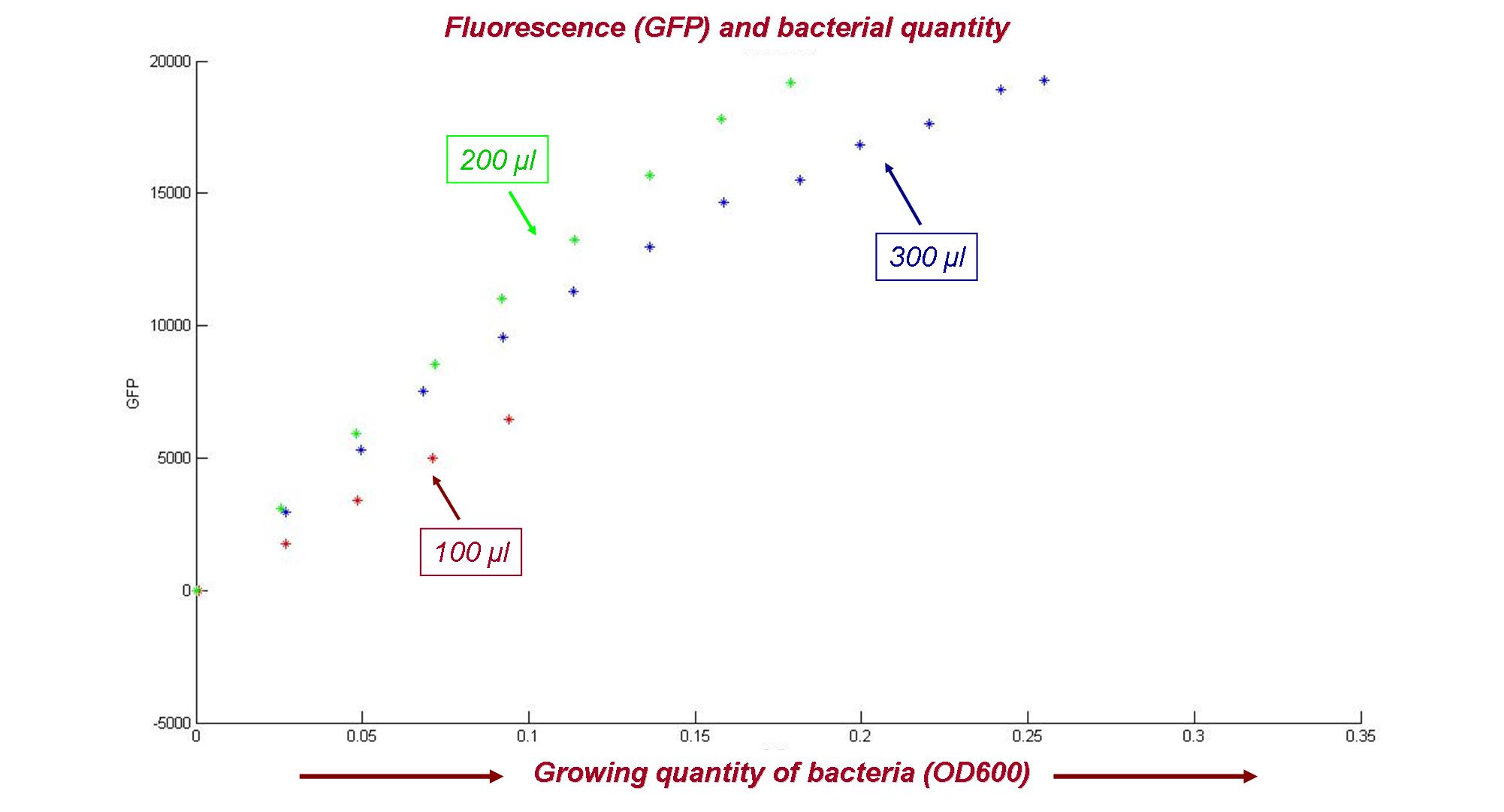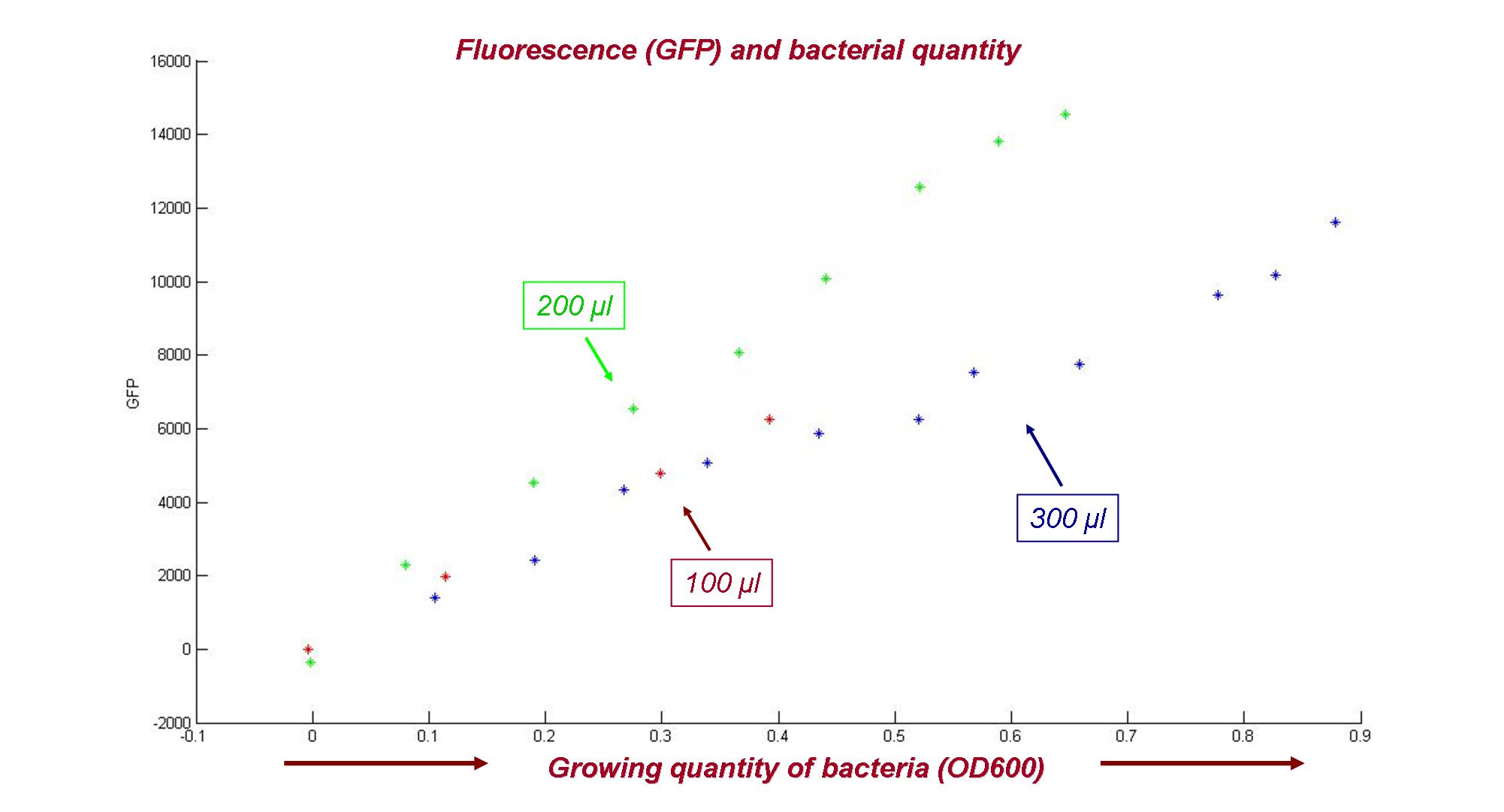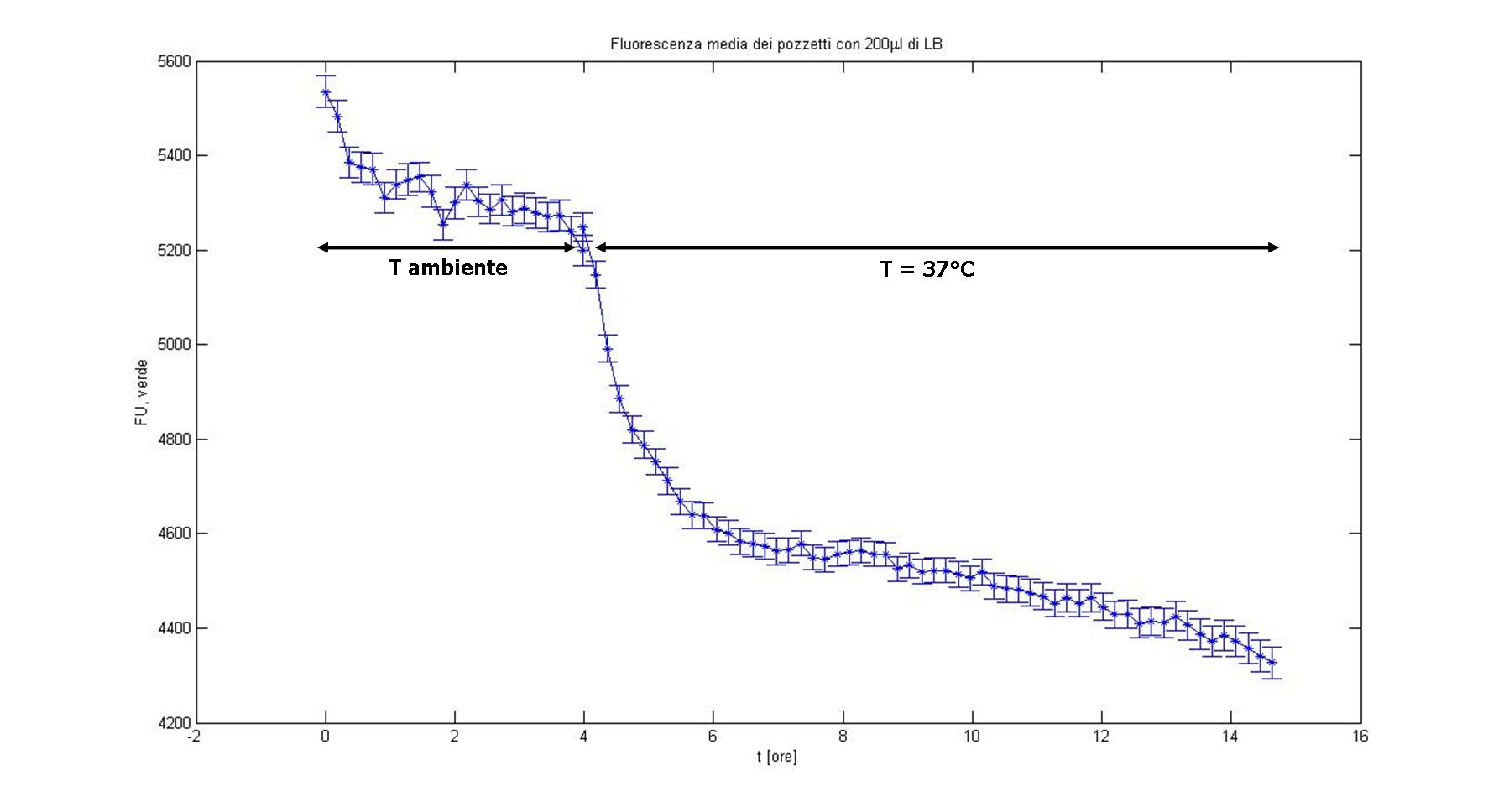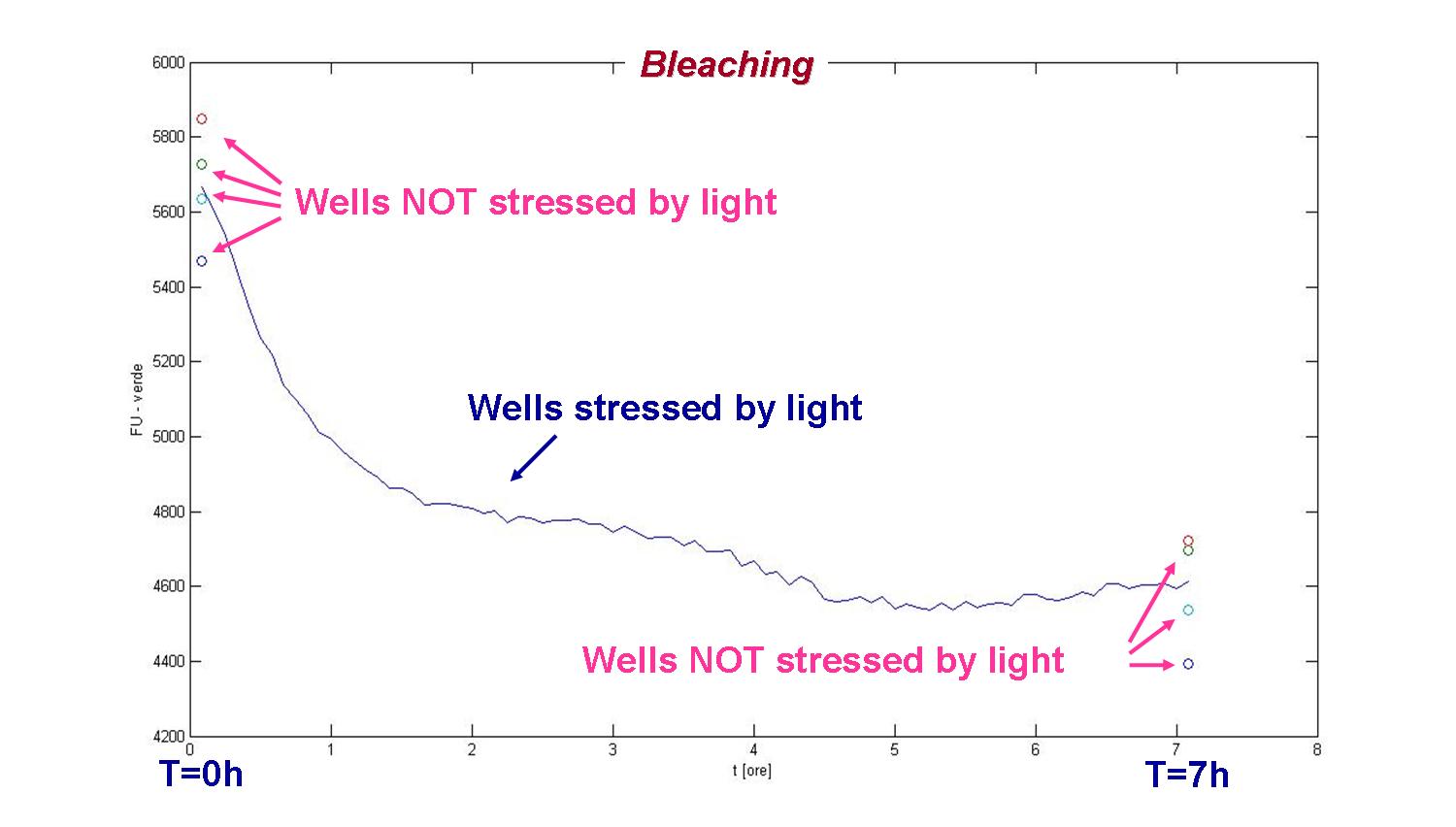Team:UNIPV-Pavia/Methods Materials/Fluorescence
From 2009.igem.org
(→Fluorescence and dilutions in liquid growing medium) |
(→Fluorescence and water dispensation) |
||
| Line 32: | Line 32: | ||
Differently from the measures of absorbance, we find out that the dispensation of water in the well causes an amplification of the fluorescence signal, both for bacterial coltures and simple liquid growing medium (in figure the results for a colture producing GFP). | Differently from the measures of absorbance, we find out that the dispensation of water in the well causes an amplification of the fluorescence signal, both for bacterial coltures and simple liquid growing medium (in figure the results for a colture producing GFP). | ||
| - | This amplification | + | This amplification seems to be linear, and by fitting a linear regression model on the experimental date we estimate this coefficient of proportionality: ??ADD??. |
You can find more informations about the experiment at [http://aimed11.unipv.it/iGEM2009 Download Protocol] - Test n.9bis, 10/10/09. | You can find more informations about the experiment at [http://aimed11.unipv.it/iGEM2009 Download Protocol] - Test n.9bis, 10/10/09. | ||
Revision as of 11:59, 11 October 2009

|
|
|
Measurements - Fluorescence |
|
|
Fluorescence and water dispensationDifferently from the measures of absorbance, we find out that the dispensation of water in the well causes an amplification of the fluorescence signal, both for bacterial coltures and simple liquid growing medium (in figure the results for a colture producing GFP). This amplification seems to be linear, and by fitting a linear regression model on the experimental date we estimate this coefficient of proportionality: ??ADD??. You can find more informations about the experiment at Download Protocol - Test n.9bis, 10/10/09.
Fluorescence and dilutions in waterThe proportionality between fluorescence measurements (GFP and RFP) and different dilutions of LB was verified in two volumetric dilutions. This considerations has not to be read together with the results of the non-liner relationship between fluorescence and water dispensation, because even if different amounts of water in the well means different dilution of the colture, in that simulation we didn't work with costant volume in the well, as in this case we do. The first two measurements in the figure must not be taken into account because of the high measure's rumour. You can find more informations about the experiment at Download Protocol - Test n.18, 06/08/09.
In this second experiment we worked with three different total volumes (100, 200 and 300 μl) in the well, and we find out that this linear relation colud be considered independent of the volume (the 100 μl case is a little bit different, because it is subject to measure's rumor). You can find more informations about the experiment at Download Protocol - Test n.20bis, 07/10/09.
Fluorescence and volumeThe relationship between fluorescence (both GFP and RFP) and volume of LB in the well present a non-linear characteristic. This test will be done also using bacterial coltures, because we note that the behaviour of the signal from fluorescent proteins is different from that coming from the autofluorescence. You can find more informations about the experiment at Download Protocol - Test n.14, 30/07/09.
Fluorescence and dilutions in liquid growing mediumThis experiment was done in two different growing mediums, LB and M9, and in three different total volumes in the well, 100μl, 200μl and 300μl; a black plate was also used to repeat the experiment in LB. The hypothesis of proportionality between fluorescence measurement and colture's O.D. was verified with some restriction. We find out that working with total volumes larger than 200μl implicates some complicances because of a kind of saturation of the curve. We note that M9 medium (thanks to its low autofluorescence) is in general better than LB, and that the black plate is preferable to the transparent one for fluorescence measurements.
Temporal evolution of fluorescence measurementsWe observed a particular descending evolution in fluorescence measurements, with regard to the signal of the growing medium. This behaviour depends in part on temperature, as it changes its evolution with temperature's changes (see the figure below), and probably in part on evaporation of the volume in the well. You can find more informations about the experiments at Download Protocol - Test n.14, 30/07/09. Bleaching and autofluorescenceA simple experiment was made to understand if the temporal descending evolution of fluorescence measurement in LB described in Temporal evolution of fluorescence measurements is related to the bleaching phenomenon of the fluorescence signal or not. The results (see the figure) let us exclude this hypothesis. You can find more informations about the experiment at Download Protocol - Test "bleaching", 31/08/09.
|
 "
"

